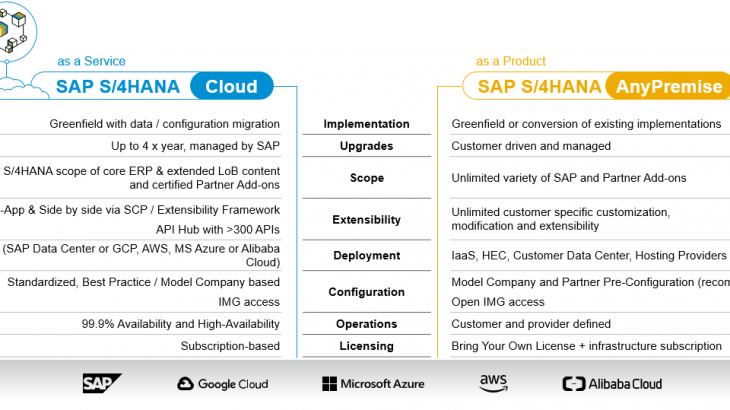This blog post targets SAP solution and technical architects and explains the deployment of SAP S/4HANA on Hyperscalers
What are Hyperscalers?
Hyperscalers are the big players in the Public Cloud market. They offer Infrastructure-as-a-Service (IaaS), Platform-as-a-Service (PaaS), and Software-as-a-Service (SaaS).
Also Read: SAP S/4HANA Financials Professional Certification Preparation Guide
This blog post focus is on Infrastructure-as-a-Service offering from Hyperscalers and SAP S/4HANA deployment on Hyperscalers
Infrastructure as a Service (IaaS) provides virtual servers, networks, storage, and systems software designed to augment or replace data centers or individually networked computers. There are 24 vendors currently offering Hyperscaler services in Public Cloud market, out of that these are SAP Certified Infrastructure-as-a-Service (IaaS) Platforms as of today
- Alibaba Cloud Computing Limited
- Amazon Web Services
- Google Cloud Platform
- Huawei Technologies Co. Ltd
- IBM Cloud
- Microsoft Azure
- Open Telekom Cloud
Hyperscalers – Market share Comparison
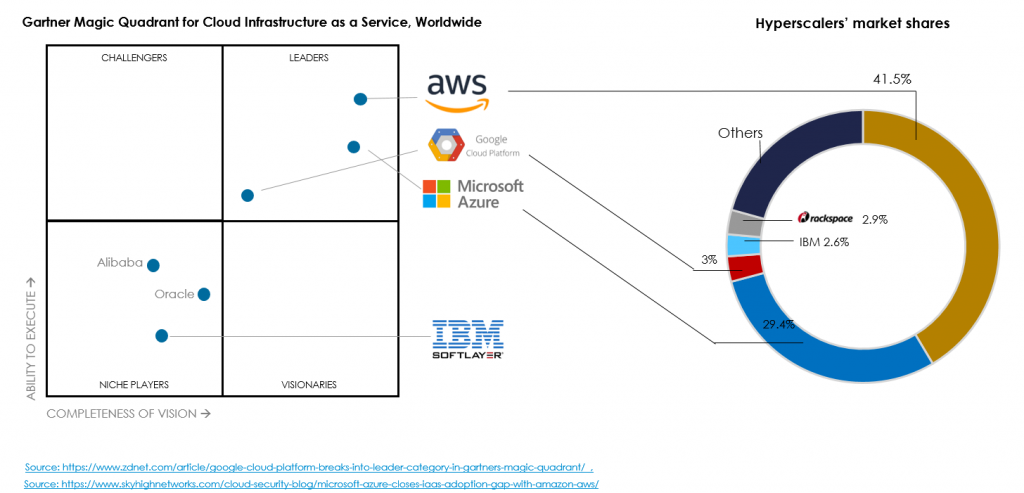
Technology Drivers for move to Hyperscaler
Adoption of infrastructure as a service (IaaS) has more than doubled over the past couple of years, with Hyperscalers offering best of breed cloud computing services to fulfill enterprise specific needs. Hyperscalers are providing range of solutions for organizations who are looking to lower the overheads by deploying and expanding into public cloud infrastructure.
Technology drivers which make Hyperscalers the most sought- after cloud option are On-demand Elasticity, Infinite Scalability, Operational Automation, Global Presence, Security & Compliance
Which facts can help to choose the right Hyperscaler (Innovation as the goal)?
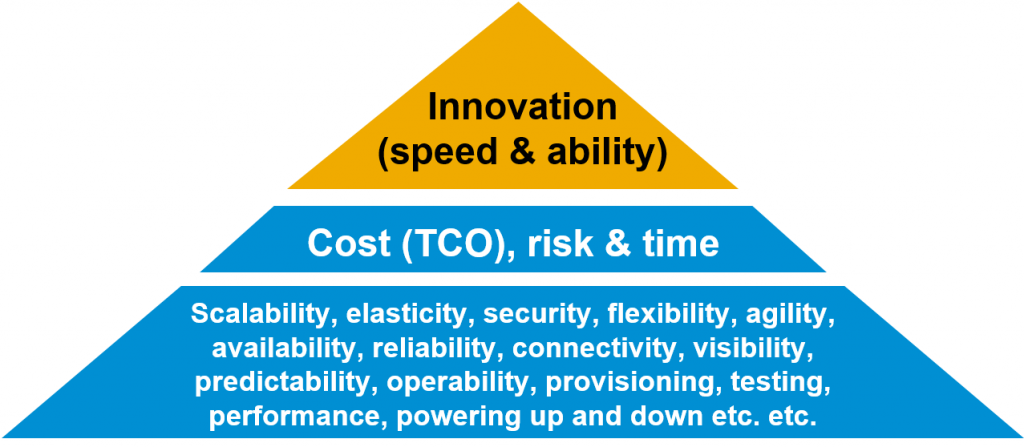
Consider your options for moving into Hyperscaler infrastructure
Match your business objectives to possible deployment strategies and options
Classic lift and shift
Re-host: Lifting SAP applications/landscapes as-is from on-premise and shifting to a public cloud environment. With this approach, the target is the exact copy of the top 3 layers in the technology stack – application, database and OS platform and there is little to no architectural changes. This enables rapid migration with minimal disruption, but it prevents from harnessing any key business benefits of public cloud migration. Realized using methods such as Classic system copy and OS-DB migrations
Re-platform: It is the technical migration of SAP applications. It maintains the existing applications but upgrades the underlying OS and DB by migrating to SAP HANA and a supported OS platform in a Hyperscaler environment – Example: SAP ERP to Business Suite Powered by SAP HANA. Use established approaches for system migration, leverage the advantages of “DMO with system move” Option.
Re-Architect: Re-imagine how the application is architected and developed using emerging application features. This is driven by a strong business need to add features, scale, or performance that would otherwise be difficult to achieve in the existing environment. Leverage the advantages of Data Migration – Landscape Transformation techniques
Transform
Convert or migrate to SAP S/4HANA hosted on a Hyperscaler from the well-known migration paths, in this type of migration, the application layer is transformed to SAP S/4HANA along with the OS and DB following one of the 3 transition paths – new implementation, system conversion and selective data transition. With this option customers gain the benefits of cloud native features but also have a new Digital Core Platform, Reinvented Processes and new UX. The benefits of transformation often outweigh the effort and costs of adapting to a new system.

SAP offers choice for the SAP S/4HANA Journey
SAP S/4HANA offers customers the choice of consumption which is a unique differentiator in the market. No matter whether we talk about SAP S/4HANA Any Premise or SAP S/4HANA Cloud, it can be run on different infrastructures, including the Hyperscaler infrastructures.
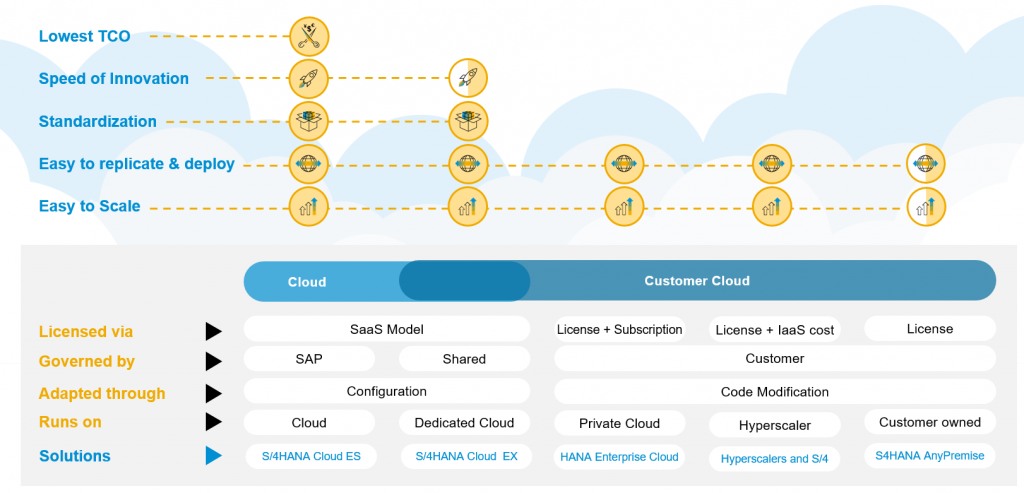
Deployment Flexibility of S/4HANA
When SAP S/4HANA is consumed as a Cloud solution, SAP owns the governance of the solution according to SaaS principles. When SAP S/4HANA is consumed as a product, the governance of the solution is with the customer, but can of course be handed over to a 3rd party (including SAP) as part of classical software application management services (AMS).
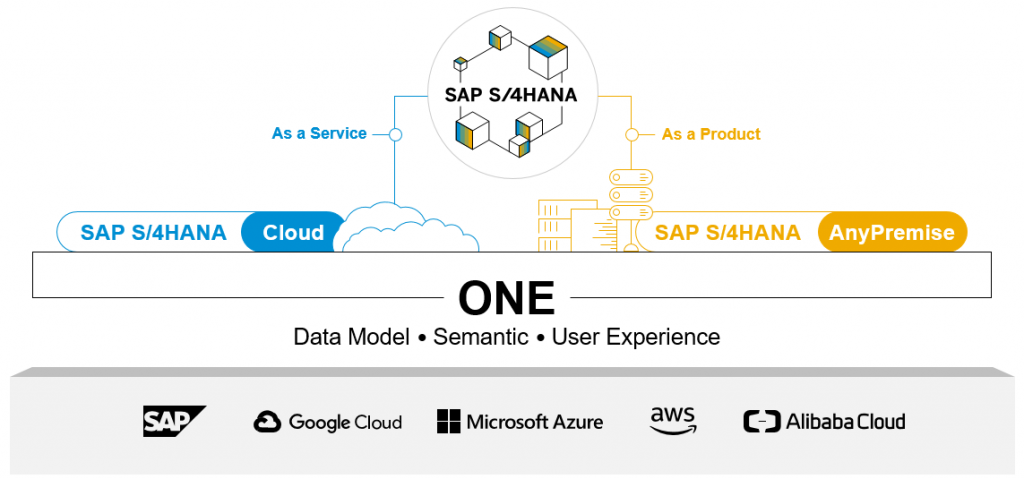
SAP offers two SAP S/4HANA Cloud flavors, which differs in areas such as upgrade cadence, functional depth, content management and extensibility. SAP introduced these flavors of the cloud as the degree of standardization customers can adopt widely by industry and business model.
Two flavors for SAP S/4HANA Cloud: SAP S/4HANA Cloud, essentials edition and SAP S/4HANA Cloud, extended edition.
- SAP S/4HANA Cloud, essentials edition comes with the highest degree of standardization and is focused on core Finance ERP and service processes.
- SAP S/4HANA Cloud, extended edition focuses on the more complex processes of other industries such as Product centric and Manufacturing Enterprises, Consumer Products and Retail and offers a comprehensive, sub-vertical tailored industry scope, support of a broad set of partner solutions and multiple ways of custom extensions.
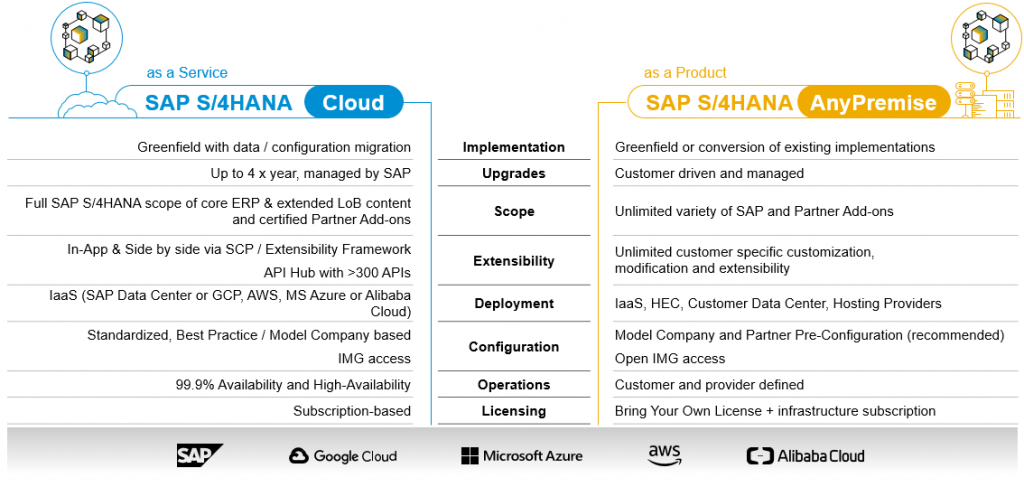
SAP S/4HANA Cloud Extended Edition (EX) powered by Hyperscalers
SAP HANA Enterprise Cloud (SAP HEC) provides the same comprehensive SLAs for SAP HEC with AWS, Azure and GCP that customers already experience with SAP HEC in SAP data centers. SAP HEC represents best of both worlds; SAP operates and manages SAP systems in a private managed cloud with IaaS from a provider of their choice under one contract and comprehensive responsibility.
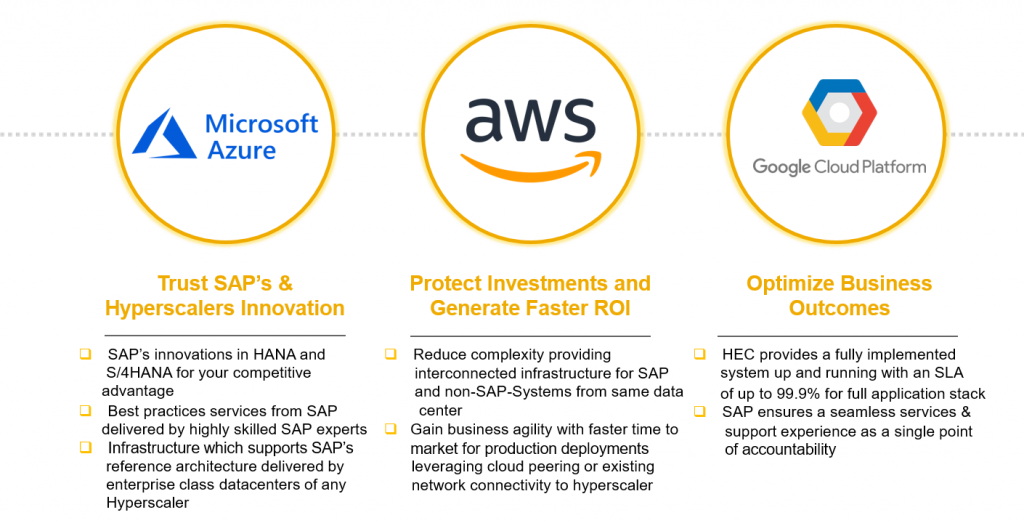
The Embrace Program
A strategic alliance between SAP and Microsoft to simplify and accelerate a customers journey to SAP S/4HANA on Microsoft Azure.
Embrace is a new partnership between SAP and Microsoft, along with our Global Strategic Services Partners (GSSPs) as implementer, provides a prescriptive journey to move SAP ERP customers to the Microsoft Azure cloud in a simple, “SAP-sanctioned” way. The partnership’s reference architecture gives customers flexibility while ensuring the future proof of their SAP implementation of SAP S/4HANA in the cloud. The initiative provides clarity on which services to leverage from SAP Cloud Platform, Microsoft Azure, and services partners. The initiative enables SAP Systems Integrators (SIs) and GSSPs to create additional value and differentiation on SAP cloud platform, driving the consumption of SAP cloud services and Microsoft Azure’s cloud.
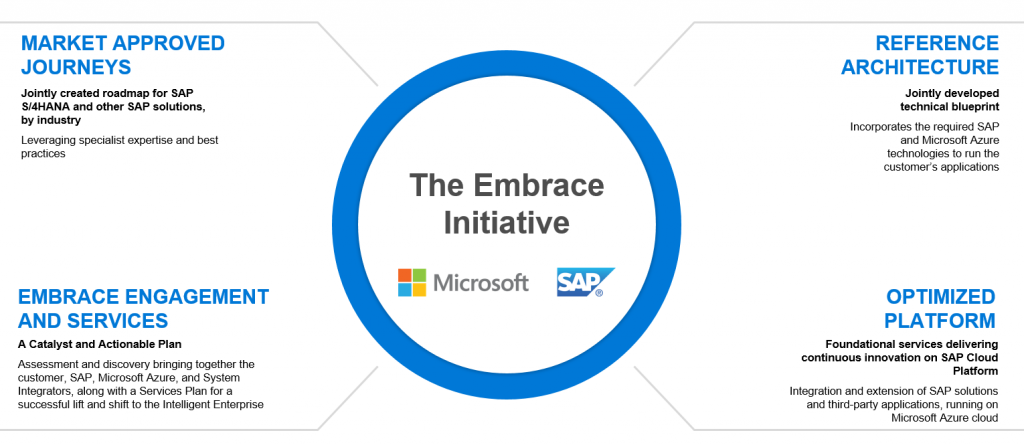
The partnership covers all topics related to SAP ERP and cloud migrations, including the Digital Core, SAP S/4HANA, SAP HANA Enterprise Cloud, and SAP S/4HANA Cloud, extended edition.
What is the value of the partnership for customers?
The SAP and Microsoft partnership brings together the power of industry- specific best practices, reference architectures, implementation services, and support. The aim of the partnership is to simplify and safeguard the move to the cloud, setting customers up for success in their business operations.
Through the partnership, SAP customers will be able to:
- Reduce complexity, minimize costs, and run on Microsoft Azure with an end-to-end SAP cloud migration and operations strategy, platform, and services.
- Safeguard their move to Microsoft Azure with out-of-the-box functionality and industry-specific best practices, while managing risk and protecting their environment with SAP services.
- Innovate with best-in-class technologies from SAP and Microsoft Azure, backed by a unified business cloud platform.
- Improve performance with foundational services enabling out-of- the-box functionality, supported by service offerings that allow environments to easily scale while ensuring SLAs
